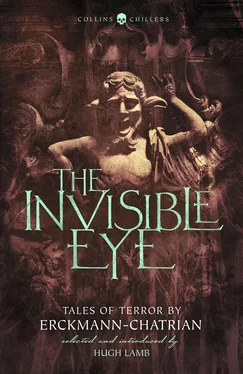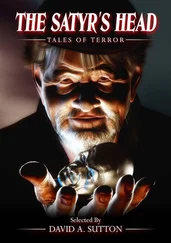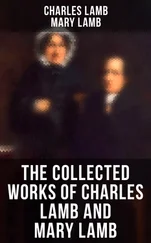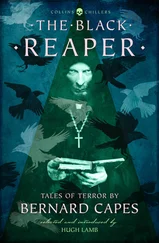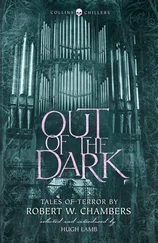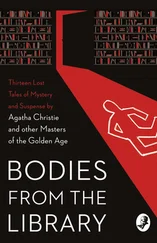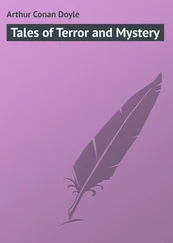Their happy working relationship did not last, however. In 1889 they quarrelled violently and it seems that Chatrian arrogantly claimed the copyright of their work. (Remember that Chatrian had spent the past forty years as the revising half of the partnership.) Erckmann went to court and recovered damages from Chatrian’s secretary (I am unable to find out exactly why). Chatrian went into an immediate decline and died on 3 September 1890. Erckmann lived on for nine years, dying on 14 March 1899. They must have been rather sad years; he does not seem to have written anything of importance on his own following the split.
Within a few years of their deaths, the two writers had slipped into obscurity in Britain. The golden era of Ward, Lock had ended around 1880, and no new title by Erckmann–Chatrian appeared in Britain after 1901. There was a Blackie edition (in French) of Contes Fantastique in 1901 (somewhat late in the day, it must be said), and there were one or two French study editions of their novels, including one, Le Blocus (1913), with a fine introduction by Arthur Reed Ropes, a friend of M.R. James and himself the author of a splendid macabre novel, The Hole of the Pit (1914). But that was it for eighty years.
However, Erckmann–Chatrian did live on, even if only as pale and wan shapes in the corner, thanks to weird fiction. They had attracted the attention of two famous writers in the genre, as different as two authors could ever be – H. P. Lovecraft and M. R. James.
It is entirely due to these two that this book exists at all. If I may be allowed a little personal history, I first encountered the names Erckmann–Chatrian in M. R. James’s Collected Ghost Stories . Being very scared of spiders, I was fascinated to read in his introduction that ‘Other people have written of dreadful spiders – for instance, Erckmann–Chatrian in an admirable story called L’Araignée Crabe ’. I spent many years wondering what terrors lay hidden behind that French title. Then, much later, I came across H. P. Lovecraft’s Supernatural Horror in Literature (a superlative researcher’s primer), and was fascinated to read more about Erckmann–Chatrian. Lovecraft noted that ‘“The Owl’s Ear” and “Waters of Death” are full of engulfing darkness and mystery, the latter embodying the familiar over-grown spider theme so frequently employed by weird fictionists’. It was a good bet that ‘Waters of Death’ was the same story as that mentioned by M. R. James. But how to get a copy? The British Museum catalogue did not mention either title, and I found that the Lovecraft version only appeared in an obscure American edition from the turn of the century, which was impossible to obtain. However, the British Museum catalogue did list several books of short stories by Erckmann–Chatrian and, on the assumption that one of them would contain this intriguing spider story, I set about tracking them down.
I never found an English book version of ‘L’Araignée Crabe’, much to my annoyance (in the end I got the French translated). What I did find was a set of splendid stories, forgotten for a century, which I duly reprinted in several of my anthologies. Then a chance encounter in 1978 with Thomas Tessier, who was an editor at Millington, led to his suggestion of an Erckmann–Chatrian collection. That Millington book was the original of this much expanded edition.
Erckmann–Chatrian stand apart from most of their contemporaries in European fiction who wrote in this vein. They did not essay the conte cruel , like Villiers de l’Isle Adam, or go in for paranoid fantasies, like Guy de Maupassant. Their tales are simple and straightforward, with all the effects up front. By rights, they should have dated severely. The pleasant surprise for modern readers is that they haven’t.
They wrote two fine, long tales: ‘The Wild Huntsman’, an essay on teratology with a sunshine-filled forest for a setting, and ‘The Man-Wolf’, a chilling story of lycanthropy, set in a winter-shrouded Black Forest castle. Their weirdest tales deal with metaphysics. ‘The Three Souls’ postulates that man is made up of three stages of development: vegetable, animal, and human. An enterprising Heidelberg scholar decides to bring them all out in the hero by starvation. Another seeker after wisdom tries to eavesdrop on the whole world through a freak of geology called ‘The Owl’s Ear’. In neither case are the results successful or happy.
‘The Invisible Eye’ is a remarkable tale of an old woman who induces suicide in the tenants of a hotel room through dummies on which she bestows magical powers. Like all of Erckmann–Chatrian’s work, the story’s florid style (probably exaggerated by the awkward translation of the day) only adds to the marvellous atmosphere. Their most memorable tale is ‘The Crab Spider’, and it is easy to see why M. R. James liked it so much. He borrowed its structure – mysterious deaths, terrible cause discovered, fiery climax – for his ‘The Ash-tree’.
In the works of Erckmann–Chatrian, we are able to step back over one hundred and fifty years, to the lost world of mid nineteenth century Europe, full of eminently believable characters – young men wooing, old men reminiscing, drinkers, smokers, noblemen, woodmen, peasants, witches, monsters, murderers, ghosts. Nothing like this is written today. Compared to their contemporaries – authors like Le Fanu or Bulwer-Lytton – Erckmann–Chatrian offer an easy target to critics, with their light touch and often bucolic tales. But these are stories with imagination second to none, and modern readers will not be disappointed. Welcome to the world of Erckmann–Chatrian.
Hugh Lamb
Sutton, Surrey
January 2018
I
When I first started my career as an artist, I took a room in the roof-loft of an old house in the Rue des Minnesängers, at Nuremberg.
I had made my nest in an angle of the roof. The slates served me for walls, and the roof-tree for a ceiling: I had to walk over my straw mattress to reach the window; but this window commanded a magnificent view, for it overlooked both city and country beyond.
The old second-hand dealer, Toubec, knew the road up to my little den as well as I knew it myself, and was not afraid of climbing the ladder. Every week his goat’s head, surmounted by a rusty wig, pushed up the trap-door, his fingers clutched the edge of the floor, and in a noisy tone he cried: ‘Well, well, Master Christian, have we anything new?’
To which I answered: ‘Come in: why the deuce don’t you come in? I’m just finishing a little landscape, and want to have your opinion of it.’
Then his long thin spine lengthened itself out, until his head touched the roof; and the old fellow laughed silently.
I must do justice to Toubec: he never bargained with me. He bought all my pictures at fifteen florins apiece, one with the other, and sold them again at forty. He was an honest Jew.
This kind of existence was beginning to please me, and I was every day finding in it some new charm, when the city of Nuremberg was agitated by a strange and mysterious event.
Not far from my garret-window, a little to the left, rose the auberge of the Boeuf-gras, an old inn much frequented by the country-people. The gable of this auberge was conspicuous for the peculiarity of its form: it was very narrow, sharply pointed, and its edges were cut like the teeth of a saw; grotesque carvings ornamented the cornices and framework of its windows. But what was most remarkable was that the house which faced it reproduced exactly the same carvings and ornaments; every detail had been minutely copied, even to the support of the signboard, with its iron volutes and spirals.
Читать дальше
